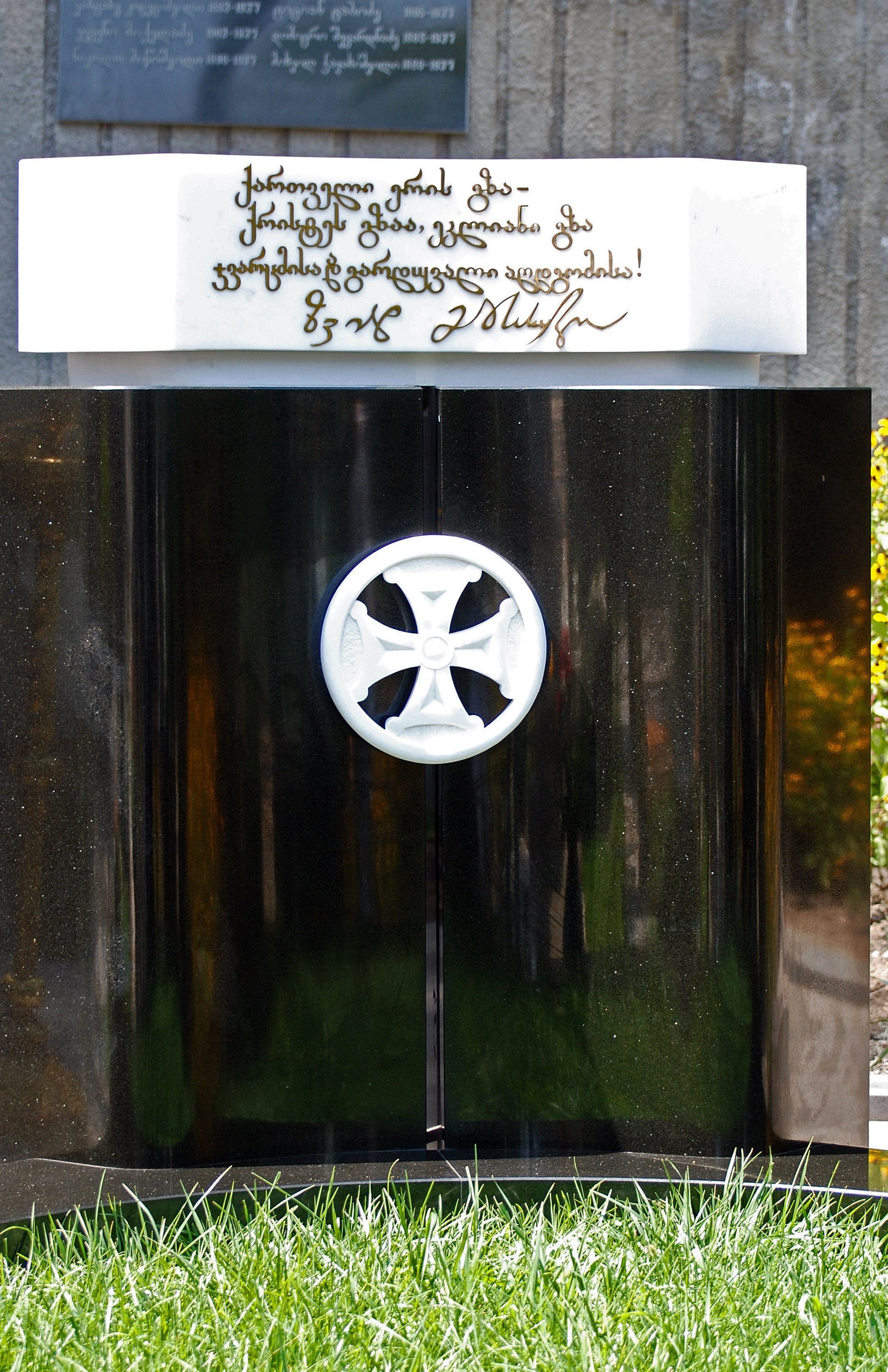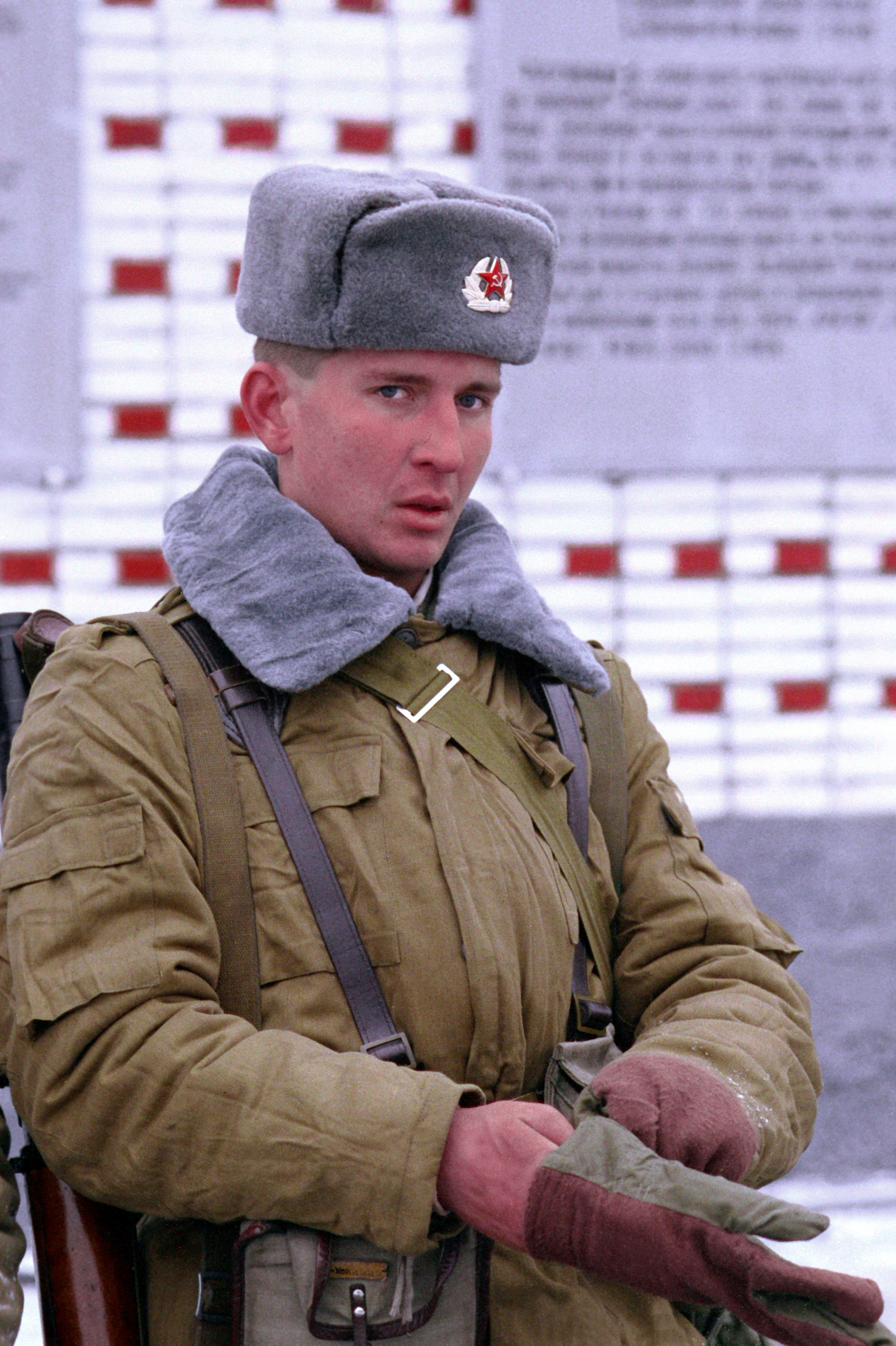|
April 9 Tragedy
April 9 Tragedy (also known as the massacre of Tbilisi or Tbilisi tragedy) refers to the events in Tbilisi, Georgian Soviet Socialist Republic, on April 9, 1989, when an anti-Soviet, pro-independence demonstration was crushed by the Soviet Army, resulting in 21 deaths and hundreds of injuries. April 9 is now remembered as the National Unity Day ( ka, ეროვნული ერთიანობის დღე, tr), an annual public holiday. Prelude In the Georgian SSR, the anti-Soviet movement grew more active in 1988. Political groups opposed to the Soviet Union organized a number of protests and gatherings in Tbilisi. The conflict between the Soviet government and Georgian nationalists deepened after the so-called Lykhny Assembly on March 18, 1989, when several thousand Abkhaz demanded secession from Georgia and restoration of the Union republic status of 1921–1931. In response, the anti-Soviet groups organized a series of unsanctioned meetings across the repub ... [...More Info...] [...Related Items...] OR: [Wikipedia] [Google] [Baidu] [Amazon] |
Georgian-Abkhaz Conflict
The Abkhazia conflict is a territorial dispute over Abkhazia, a region on the eastern coast of the Black Sea in the South Caucasus, at the intersection of Eastern Europe and Western Asia. The conflict involves Georgia, the Russian Federation and the Russian-backed self-proclaimed Republic of Abkhazia, which is internationally recognised only by Russia, Venezuela, Nicaragua, Nauru, and Syria; Georgia and all other United Nations members consider Abkhazia a sovereign territory of Georgia.Olga Oliker, Thomas S. Szayna. Faultlines of Conflict in Central Asia and the South Caucasus: Implications for the U.S. Army. Rand Corporation, 2003, .Emmanuel Karagiannis. Energy and Security in the Caucasus. Routledge, 2002. . However, as of 2025, Georgia lacks ''de facto'' control over the territory. The beginning of the conflict dates back to the dissolution of the Soviet Union in 1991; however, the dispute can be traced to 1918—1919 Abkhazia conflict over '' Sukhumi okrug'' (which corresp ... [...More Info...] [...Related Items...] OR: [Wikipedia] [Google] [Baidu] [Amazon] |
Zviad Gamsakhurdia
Zviad Konstantines dze Gamsakhurdia ( ka, ზვიად კონსტანტინეს ძე გამსახურდია; ; 31 March 1939 – 31 December 1993) was a Georgian politician, human rights activist, dissident, professor of English language studies and American literature at Tbilisi State University, and writer who became the first democratically elected President of Georgia in May 1991. A prominent exponent of Georgian nationalism and pan-Caucasianism, Zviad Gamsakhurdia was involved in Soviet dissident movement from his youth. His activities attracted attention of authorities in the Soviet Union and Gamsakhurdia was arrested and imprisoned numerous times. Gamsakhurdia co-founded the Georgian Helsinki Group, which sought to bring attention to human rights violations in the Soviet Union. He organized numerous pro-independence protests in Georgia, one of which in 1989 was suppressed by the Soviet Army, with Gamsakhurdia being arrested. Eventually, ... [...More Info...] [...Related Items...] OR: [Wikipedia] [Google] [Baidu] [Amazon] |
Rustavelis Gamziri
Rustaveli Avenue ( ka, რუსთაველის გამზირი, Rust'avelis Gamziri), formerly known as Golovin Street, is the central avenue in Tbilisi named after the medieval Georgian poet, Shota Rustaveli. The avenue starts at Freedom Square and extends for about 1.5 km in length, before it turns into an extension of Kostava Street. Rustaveli is often considered the main thoroughfare of Tbilisi due to the numerous governmental, public, cultural, and business buildings that are located along or near the avenue. The Parliament of Georgia building, the Georgian National Opera Theater, the Rustaveli State Academic Theater, the Georgian Academy of Sciences, Kashveti Church, the Georgian Museum of Fine Arts, Simon Janashia Museum of Georgia (part of the Georgian National Museum), and Biltmore Hotel Tbilisi among others, are all located on Rustaveli. History Rustaveli Avenue has its origins in the Digomi Road which connected Tbilisi to the North Caucasus via ... [...More Info...] [...Related Items...] OR: [Wikipedia] [Google] [Baidu] [Amazon] |
Ilia II
Ilia may refer to: Science and medicine *''Apatura ilia'' or lesser purple emperor, a butterfly *Ilium (bone) (plural: "ilia"), pelvic bone People * Ilia (name), numerous ** Ilia II, the current Catholicos-Patriarch of All Georgia Places * Ilia, Hunedoara, Romania * Elis (regional unit), Greece * Elis Province, Greece Arts and literature *Ilia, a character in '' Idomeneo'', an opera by Mozart *Ilia (The Legend of Zelda), a character in the video game ''The Legend of Zelda: Twilight Princess'' * Ilia (''Star Trek''), a character in ''Star Trek: The Motion Picture'' *Ilia, a nation of the continent Elibe from the ''Fire Emblem'' series *Ilia the Righteous, a prominent figure of new Georgian literature *Rhea Silvia or Ilia, the mother of Romulus and Remus in Roman mythology Other *Illinois Institute of Art – Chicago, a nonprofit institution *Ilia (band), a rock band *Arturo Umberto Illia (1900–1983), former president of Argentina See also *Elia (other) *Ilija (disa ... [...More Info...] [...Related Items...] OR: [Wikipedia] [Google] [Baidu] [Amazon] |
Transcaucasian Military District
The Transcaucasian Military District, a military district of the Soviet Armed Forces, traces its history to May 1921 and the incorporation of First Republic of Armenia, Armenia, Azerbaijan Democratic Republic, Azerbaijan, and Democratic Republic of Georgia, Georgia into the Soviet Union. It was disbanded by being redesignated as a Group of Forces in the early 1990s, after the Dissolution of the Soviet Union, Soviet Union collapsed. The military district formed as a basis of the modern day armed forces of Armenia, Azerbaijan, and Georgia (country), Georgia as well as unrecognized polities of Abkhazia and South Ossetia. History The Transcaucasian Military District was originally formed from the Red Army's Separate Caucasian Army, which became the Red Banner Caucasian Army in August 1923. On 17 May 1935, the Red Banner Caucasus Army was redesignated the Transcaucasian Military District. The Georgian, Armenian, and Azerbaijani national formations, plus units from the 11th Soviet Red ... [...More Info...] [...Related Items...] OR: [Wikipedia] [Google] [Baidu] [Amazon] |
Colonel General
Colonel general is a military rank used in some armies. It is particularly associated with Germany, where historically General officer#Old European system, general officer ranks were one grade lower than in the Commonwealth and the United States, and was a rank above full , but below . The rank of colonel general also exists in the armed forces organized along the lines of the Soviet model, where it is comparable to that of a lieutenant general. Austria-Hungary In the Austro-Hungarian Army, the second-highest rank was colonel general (, ). The rank was introduced in 1915, following the German model. The rank was not used after World War I in the Austrian Federal Army, Austrian Army of the Republic. Kuk ColGen 1918.svg, Insignia of an Austro-Hungarian Army colonel general Hungary The rank of () is still used in Hungary. The rank replaced the ranks of (general of infantry), (general of cavalry), and (general of artillery) in the early 1940s. Since 1991, has been the hig ... [...More Info...] [...Related Items...] OR: [Wikipedia] [Google] [Baidu] [Amazon] |
Rustaveli Avenue
Rustaveli Avenue ( ka, რუსთაველის გამზირი, Rust'avelis Gamziri), formerly known as Golovin Street, is the central avenue in Tbilisi named after the medieval Georgian poet, Shota Rustaveli. The avenue starts at Freedom Square and extends for about 1.5 km in length, before it turns into an extension of Kostava Street. Rustaveli is often considered the main thoroughfare of Tbilisi due to the numerous governmental, public, cultural, and business buildings that are located along or near the avenue. The Parliament of Georgia building, the Georgian National Opera Theater, the Rustaveli State Academic Theater, the Georgian Academy of Sciences, Kashveti Church, the Georgian Museum of Fine Arts, Simon Janashia Museum of Georgia (part of the Georgian National Museum), and Biltmore Hotel Tbilisi among others, are all located on Rustaveli. History Rustaveli Avenue has its origins in the Digomi Road which connected Tbilisi to the North Caucasu ... [...More Info...] [...Related Items...] OR: [Wikipedia] [Google] [Baidu] [Amazon] |
Georgian Parliament Building (Tbilisi)
The Parliament of Georgia Building ( ka, საქართველოს პარლამენტის შენობა, tr) is the meeting place of the Parliament of Georgia, located in Tbilisi, the capital of Georgia. It is located in 8 Rustaveli Avenue, close to the foothills of Mount Mtatsminda. The building complex was constructed as the House of Government of Georgian SSR on the site of the demolished 19th-century Alexander Nevsky Cathedral and adjacent churchyard, with burials of the Georgian cadets killed during the Bolshevik invasion of 1921. It consists of two buildings; the "upper" building was designed by Viktor Kokorin and Giorgi Lezhava and built from 1933 to 1938. The "lower" building, along Rustaveli Avenue, was constructed by the same architects with an input from Vladimer Nasaridze from 1946 to 1953. The two buildings are connected with a courtyard, with staircases and fountains. The design of both buildings heavily uses elements of traditional Georgian ... [...More Info...] [...Related Items...] OR: [Wikipedia] [Google] [Baidu] [Amazon] |
Georgians
Georgians, or Kartvelians (; ka, ქართველები, tr, ), are a nation and Peoples of the Caucasus, Caucasian ethnic group native to present-day Georgia (country), Georgia and surrounding areas historically associated with the Georgian kingdoms. Significant Georgian diaspora communities are also present throughout Georgians in Russia, Russia, Georgians in Turkey, Turkey, Georgians in Greece, Greece, Iranian Georgians, Iran, Georgians in Ukraine, Ukraine, the Georgian Americans, United States, and the European Union. Georgians arose from Colchis, Colchian and Kingdom of Iberia (antiquity), Iberian civilizations of classical antiquity; Colchis was interconnected with the Ancient Greece, Hellenic world, whereas Iberia was influenced by the Achaemenid Empire until Alexander the Great conquered it. In the early 4th century, the Georgians became one of the first to Christianization of Iberia, embrace Christianity. Currently, the majority of Georgians are Eastern Orthodo ... [...More Info...] [...Related Items...] OR: [Wikipedia] [Google] [Baidu] [Amazon] |
Abkhaz People
The Abkhazians or Abkhazes are a Northwest Caucasian ethnic group, mainly living in Abkhazia, a disputed region on the northeastern coast of the Black Sea. A large Abkhaz diaspora population resides in Turkey, the origins of which lie in the Caucasian War in the late 19th century. Many Abkhaz also live in other parts of the former Soviet Union, particularly in Russia and Ukraine. Ethnology The Abkhaz language belongs to the isolate Northwest Caucasian language family, also known as Abkhaz–Adyghe or North Pontic family, which groups the dialectic continuum spoken by the Abaza–Abkhaz (Abazgi) and Adyghe ("Circassians" in English). Abkhazians are closely ethnically related to Circassians. Classical sources speak of several tribes dwelling in the region, but their exact identity and location remain controversial due to Abkhaz–Georgian historiographical conflict. Subgroups There are also three subgroups of the Abkhaz people. The Bzyb (Бзыԥ, Bzyph) reside in the Bz ... [...More Info...] [...Related Items...] OR: [Wikipedia] [Google] [Baidu] [Amazon] |
Public Holidays In Georgia (country)
References SourcesNational holidays of Georgia - Article 30 {{Georgia (country) topics Lists of public holidays by country, Georgia Public holidays in Georgia (country) Society of Georgia (country) Lists of events in Georgia (country), Holidays ... [...More Info...] [...Related Items...] OR: [Wikipedia] [Google] [Baidu] [Amazon] |
Soviet Army
The Soviet Ground Forces () was the land warfare service branch of the Soviet Armed Forces from 1946 to 1992. It was preceded by the Red Army. After the Soviet Union ceased to exist in December 1991, the Ground Forces remained under the command of the Commonwealth of Independent States until it was formally abolished on 14 February 1992. The Soviet Ground Forces were principally succeeded by the Russian Ground Forces in Russian territory. Outside of Russia, many units and formations were taken over by the post-Soviet states; some were withdrawn to Russia, and some dissolved amid conflict, notably in the Caucasus. While the Ground Forces are commonly referred to in English language sources as the Soviet Army, in Soviet military parlance the term '' armiya'' (army) referred to the combined land and air components of the Soviet Armed Forces, encompassing the Ground Forces as well as the Strategic Rocket Forces, the Air Defence Forces, and the Air Forces. After World W ... [...More Info...] [...Related Items...] OR: [Wikipedia] [Google] [Baidu] [Amazon] |






